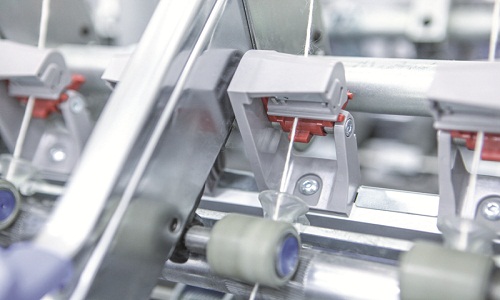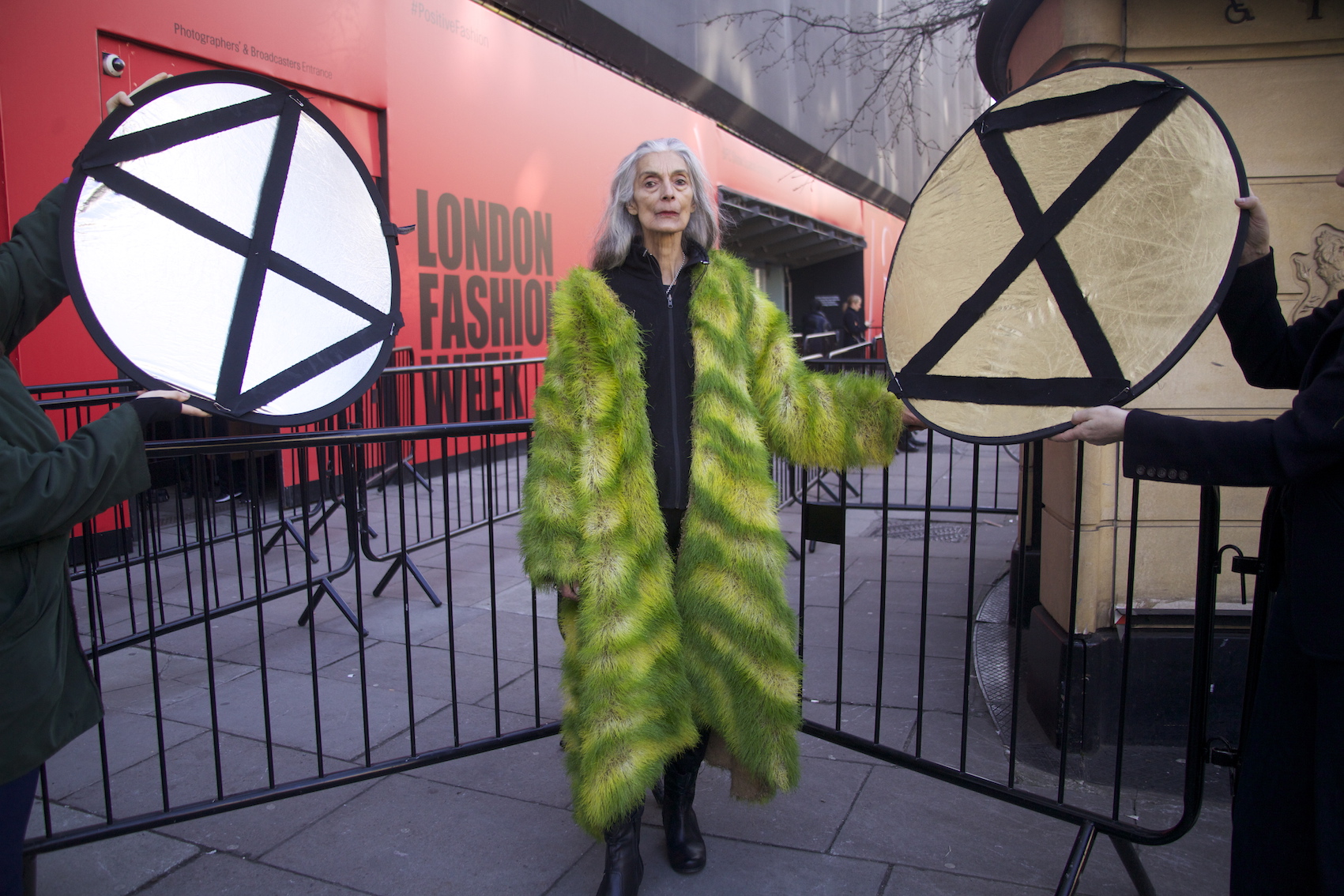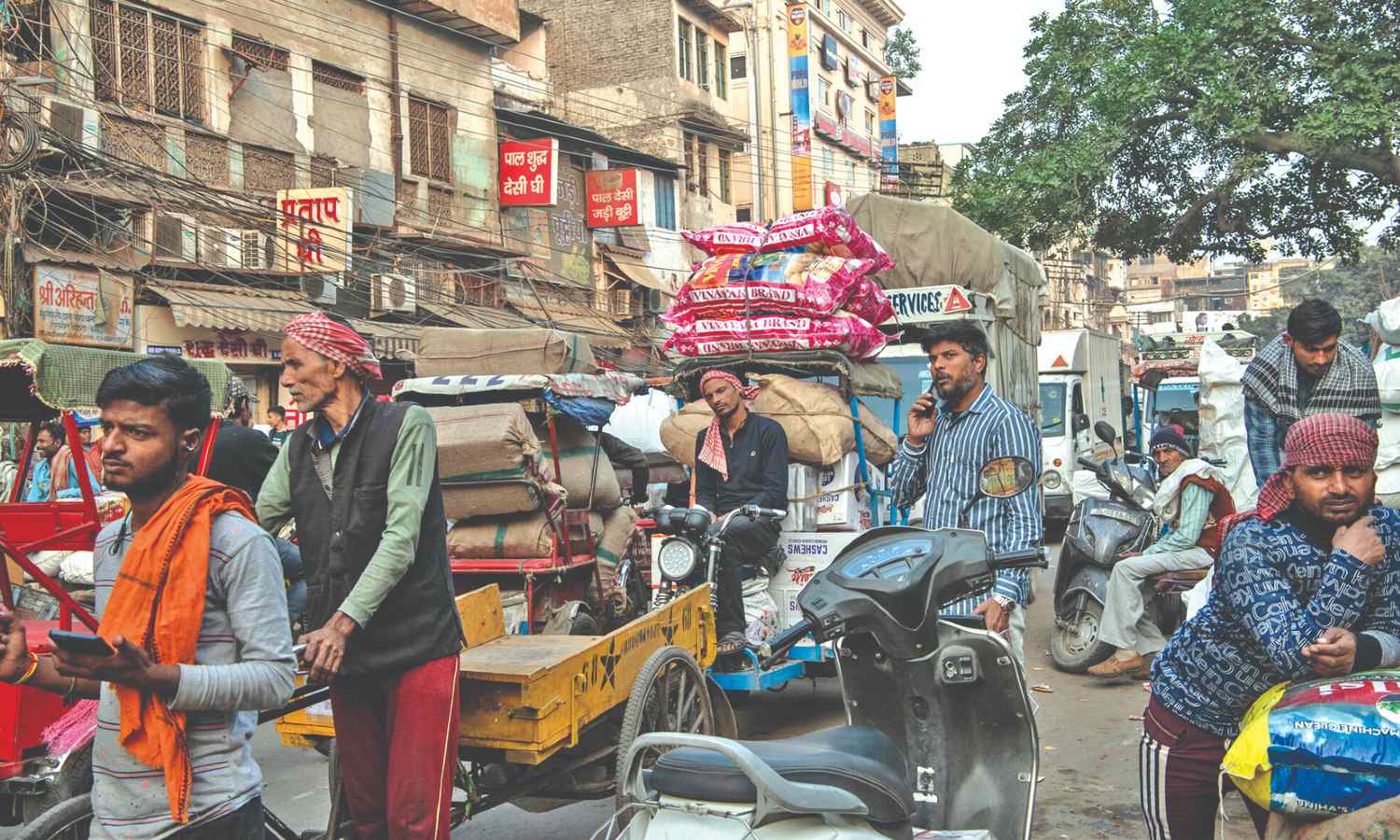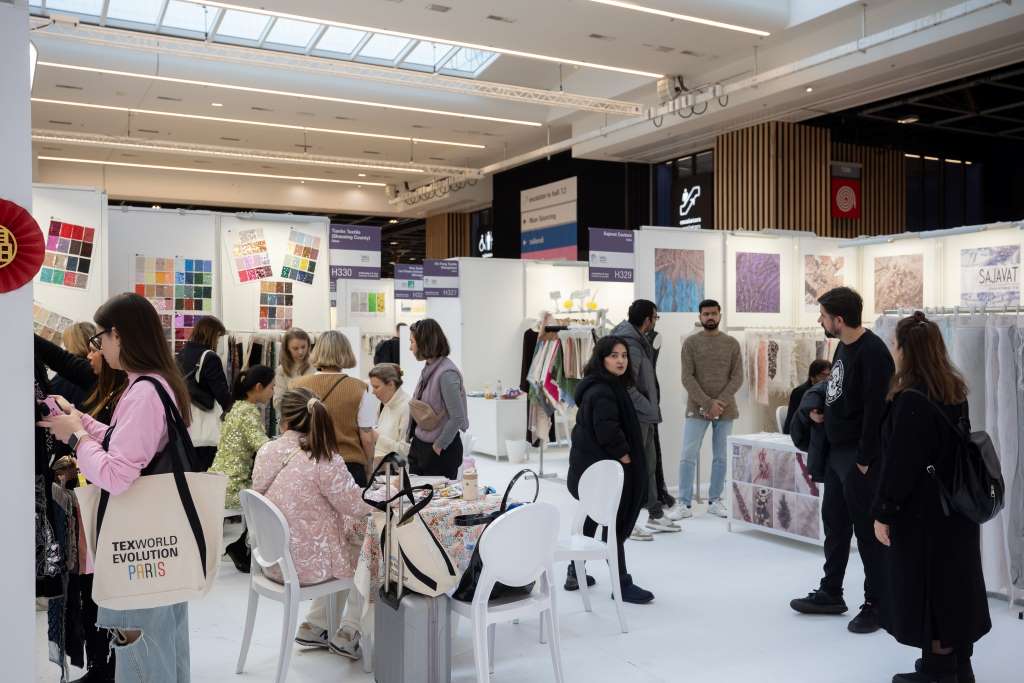FW
Sweden’s fashion companies have a social conscience and are acutely aware of how their business can affect both the environment and the people working in it.
For example, Silversmith Sofia Holpp doesn’t do any sketching on paper. She conceptualises her designs in her mind before creating a prototype. After production, all metal waste is collected and sent back to the wholesaler for recycling, and she has also located manufacturing close to the point of sale to keep Holpp’s carbon footprint down. In the future the plan is to set up local production centers outside of Europe, so the jewelry has to travel as short a distance as possible to its destination.
Bukvy is a five-in-one bag brand. It transforms with the help of zips and straps, negating the need for a separate accessory for each occasion. The practical but stylish bag lasts for years. And if a strap wears out, Bukvy can replace it to make it last even longer. The bag is made of 100 per cent vegetable tanned leather than the commonly used method involving chrome.
Denim maker Lindex uses organic cotton. Sustainable methods reduce the use of water, chemicals and energy. Even swing tags, buttons and zippers are made from organic or sustainable materials wherever possible.
Apparel failed to benefit from the uptick in US consumer spending that continued in October. Personal consumption spending rose almost four per cent on a 12-month smoothed basis, far exceeding apparel and footwear spending, which edged up by only one per cent. Footwear drove the fashion category, rising by almost three per cent, while apparel’s increase was a mere 0.6 per cent.
Weather was partly to blame. Temperatures were above normal in much of the country, and several hurricane-like storms threatened the Southeastern US and the west coast, putting a damper on business activity. Within apparel, children’s apparel stoodout, rising by almost three per cent, while spending on women’s and men’s clothing remained at the near-flat levels seen for the past few months.
Since March, prices for children’s apparel have been falling faster than those in other apparel categories, causing parents to take advantage of these good deals to spruce up their kids’ wardrobes. States in which a majority of the population voted for Trump saw the highest year-over-year gains in online apparel revenue in the month of November. Of the 26 states that saw over 10 per cent of growth in November in online apparel sales relative to the same period last year, 20 were won by Trump.
"Uster showcased its latest innovations like sentinel machine, ring spinning monitory system at ITME India 2016. The company also introduced Ustar quantum series, which is its anniversary edition. “We are excited about an approach called ‘Managing Spinning Mill with Quality Match.’ This is for spinners who are ambitious and want to make the most out of their business and are focussed on improving quality,” says Edith Aepli, Senior Manager, (Marketing and Communications), Uster."

Uster showcased its latest innovations like sentinel machine, ring spinning monitory system at ITME India 2016. The company also introduced Ustar quantum series, which is its anniversary edition. “We are excited about an approach called ‘Managing Spinning Mill with Quality Match.’ This is for spinners who are ambitious and want to make the most out of their business and are focussed on improving quality,” says Edith Aepli, Senior Manager, (Marketing and Communications), Uster. Taking about other products in the offing, he adds, “We have different instruments for different purposes. We have fibre testing instrument for cotton. Then we have fibre cleaner, the instruments are available for manmade as well as natural fibres.”
Gaining first-hand experience

The company showcased its products first time in Asia through ITMA Asia Show and then are displayed their mettle at just concluded ITME in Mumbai. “What we have learnt is Indian spinners are well travelled and are aware of our launches since the time we introduced them in Milan. Coming to India is a part of our strategy where we want everyone from the spinning industry to get to know about our innovations,” Aepli explains. Offering insights into their business strategy, he says, “We don’t have any strategy wherein we are trying to target a specific country, be it China, Turkey or India. We wish to reach out to spinners who have got vision and want to improve their business in a sustainable way. Our innovations clearly show our attitude towards things. Our aim is to monetise the investments they make and provide them with efficient technology. We want to make them reliable partners for their clients. That is what we have at the moment in terms of our business strategy. It does not matter the spinner belongs to Bangladesh or India.”
India advantage
India has a long history in spinning. “We are ambitions about India. Also, it is compatible with our plans to become global. Of course, there are challenges for spinners as well as for us. But we also know that Indian textile stakeholders like to be challenged and hold potential to maintain a better place for themselves in the global space. And we are here to help them out in the cause. Indians are rapidly becoming technology-driven. That is a good sign for the Indian market. India is one of our major markets after China,” Aepli avers. “We have covered almost all countries in spinning and are trying to strengthen our position where there are opportunities. So, it’s been a kind of exploration and expansion strategy. We have received an impressive response during the show and are happy to be a part of India growth story,” he concludes.
The upcoming Hong Kong Fashion Week, to be held from January 16 to 19, 2017 at the Hong Kong Exhibition & Convention Centre, will be introducing two new apparel zones: fashionable sportswear and casual wear. The introduction of these two new categories reflects the popularity of active wear and sportswear as fitness takes on a more important role in people’s lives and the fact that people are following a more California lifestyle of dressing less formally.
This would be the 48th edition of Hong Kong Fashion Week which will double up as a fashion mecca for runway shows and as a place to do business with 1,500 apparel, accessories and fabric exhibitors who are expected to attend from around the world. The bulk of the exhibitors would be of Chinese origin.
The four-day fair has been divided into 20 thematic zones for various clothing categories. These include knitwear, denim, eveningwear, thermal clothing, men in style for the latest in men’s fashion, fabrics and yarn and the international fashion designers showcase.
There will also be dozens of fashion shows and parades including the Fashionally Collection which would showcase new local design talent. Also on hand will be international forecasting agencies revealing the latest in fashion trends and panel discussions on updated market information. Hong Kong Fashion Week is a biannual event held in January and July. Last January, there were about 530 exhibitors from China and another 400 from Hong Kong while India had a pavilion with 52 exhibitors. New to the show were companies from Myanmar, Vietnam, the Philippines, Romania, Uzbekistan and New Zealand. Last January, the fair, organized by the Hong Kong Trade Development Council attracted nearly 18,000 buyers from 93 countries and regions. The council organized 90 buying missions from 43 countries.
Pakistan is facing problems in FTA with China. China has reportedly refused to give more concessions to Pakistan on the existing free trade agreement. Pakistan wants China to grant deeper market access for 35 to 40 tariff lines of Pakistan's prime export interest in the first step to make the FTA mutually beneficial and to promote acceptability of the second phase.
Pakistan has also shared concerns over insufficient utilisation of the concessions given by China to Pakistan and the competition faced by local industries due to cheap imports from China. Pakistan’s major exports to China in 2015 were rice, cotton yarn and woven fabric while imports were electronics, stainless steel items, polyester, yarn, fabric and tires. Pakistan has a trade deficit of more than nine billion dollars with China while China has a trade deficit of more than 14 billion dollars.
The FTA covers more than 6,700 tariff lines at eight-digit tariff code under the harmonised system. The two countries have discussed tariff reduction modalities for the second phase besides the electronic data interchange, services and investment, sanitary and phyto-sanitary and technical barriers to trade measures.
Currently Pakistan has reduced duty to zero per cent on 35 per cent of the products while China has reciprocated by reducing duties to zero per cent on 40 per cent of the products.
Pakistan and Italy will expand and promote mutual trade in garments and textiles. Trade bodies of both countries will manage business contacts, seminars, business meetings, presentations, exhibitions and other arrangements to make potential partners and export possibilities available.
They will assist in small and medium-sized business development, provide technical assistance, search for partners for trade and joint ventures as well as render other services of interest for business enterprises of both parties. Pakistan will provide visa assistance for Italian companies, besides arranging factory visits for Italian delegations and B2B meetings with its members on their arrival in Pakistan. The MoU will go a long way in helping Pakistan’s value-added garment manufacturers to find their way into Italian market.
The countries have agreed to regularly exchange, provide and update each other on information that they have about new technological developments for machinery and accessories for the textile sector in Italy and the international market as well as information about the textile sector in Pakistan. Italy is Pakistan’s largest export destination within the EU after the United Kingdom and Germany.
Pakistani exports to Italy consist of textiles, clothing and leather apparel. Around 90 per cent of Pakistan’s exports to Italy are textile- and leather-related products. Almost half of Italy’s exports to Pakistan fall in the category of machinery and equipment.
In a move that would bring a smile on the faces of thousands of traders and importers, the Pakistan government has lifted an ‘undeclared’ ban on import of ginned cotton from India. It has also pledged to strictly implement all phyto sanitary and other conditions governing the fibre’s imports on future incoming shipments via surface or sea.
Earlier, the Department of Plant Protection (DPP) of the Ministry of National Food Security and Research put cotton imports from India on hold through Wagah and Karachi port from November 23, saying shipments did not fulfill phyto sanitary conditions. However, traders claimed that rising border tensions between the two neighbours had prompted Islamabad to impose the ban on Indian cotton.
The DPP had started issuing permits for importing cotton from India via Wagah. But the DPP has also made it clear to importers that only the consignments free from cotton seeds will be accepted and allowed into the country. Traders said none of these conditions is new.
Last year, Pakistan imported ginned cotton worth more than $800 million from India which accounted for two-thirds of India’s cotton exports. Traders are expecting cotton imports from India and elsewhere to surge this year in view of the anticipated shortfall in the domestic crop. It was in the last year that a drop of 27 per cent in domestic cotton output was seen. This has taken away 0.5 per cent of gross domestic product growth rate, according to the budget for the ongoing year.
An organising campaign backed by IndustriALL Global Union in the textile and garment sector in the Middle East and North Africa is seeing strong results with many unions reporting strong growth. The said has resulted in an impressive growth for unions in Tunisia and other countries within a year.
Key countries supplying textiles and garments in the region are: Egypt, Jordan, Tunisia, Morocco and Algeria. Organising campaigns were launched in these countries with concrete targets using international tools such as global framework agreements for leverage. IndustriALL conducted an extensive mapping of the sector before starting the campaign.
In Tunisia, the organizing campaign started in December 2015 with work to support affiliate Federation Generale du Textile, de l'Habillement, Chaussureet Cuir (FGTHCC-UGTT). It included training, visits to factories and industrial areas, mobilizing women and young people, producing material, and conducting a survey.
The textile and garment sector is one of Tunisia’s main industries that employs about 176,000 people. In 2014, it accounted for more than $2.7 billion in exports. Eighty per cent of exports go to the EU. This may grow as Tunisia and the EU are negotiating a free trade agreement. Tunisia manufactures for major brands like H&M, Zara, Calvin Klein, Benetton and GAP. Despite the size and importance of the sector, it suffers from low investment, with low value added, and production usually happens in small units. There is very little formal training. Wages are low, with an average of about $200 per month, not much above the minimum wage.
Delta Galil, an Israeli clothing company, has bought V F Corp’s three iconic Californian lifestyle brands including 7 For All Mankind. The other two brands are: Ella Moss and Splendid. The deal is considered a bargain and Delta Galil will be adding $300 million a year in revenues to its bottom line next year. 7 For All Mankind was started in Los Angeles in 2000 during the height of the premium denim boom. Splendid and Ella Moss were created by a lawyer. Revenues reached $95 million for the two labels in 2008.
VF Corp originally bought the labels for more than a billion dollars several years ago and saw revenues from the three drop several years in a row. The three contemporary sportswear brands are known for their luxury fabrics and trendy designs that help them command prices that go well over $100 a garment.
Delta Galil, a 40-year-old company, is known for making children’s wear, active wear and other garments for men and women. It owns several lingerie brands as well as PJ Salvage, a sleepwear and loungewear brand in California that it acquired last year. Its other labels include Schiesser, KN Karen Neuberger, Nearly Nude, Little Miss Matched and Fix.
With a 15 per cent rise in turnover of $4.5 billion in the last five years, the Indian denim market is booming. Experts predict the market would reach $8 billion mark by 2023. According to Saurer Schlafhorst, a leading textile machinery manufacturer, growth in denim yarn production in the country has been dynamic with increased use of Autocoro 9 automated, independent production unit. The biggest denim manufacturers in India and the largest India-based customer for the Autocoro 8 and Autocoro 9 made by the German textile machinery manufacturer, Sudarshan already owns the Autocoro 8 after the company decided to invest in the new Autocoro 9 model which was exhibited at ITMA 2015 in Milan. Thirteen Autocoro 8 and 9 other machines with a total of 6,528 spinning positions are now in operation at two plants around the clock producing cotton yarns that are predominantly intended for downstream processing within the company.
In order to achieve above-average growth and profitable margins, the Indian textile industry has already made regular use of the innovative Autocoro 8 technology in recent years. One of the first Autocoro 9 machines was supplied to an Indian quality spinning mill T C Spinners which ordered the Autocoro 9 at ITMA 2015 in Milan.
T C Spinners, founded in 2006, primarily produces weaving and knitting yarns that are made from 100 per cent cotton as well as polyester yarns. The family-run company boasts a total production capacity of around 50,000 spinning positions.












